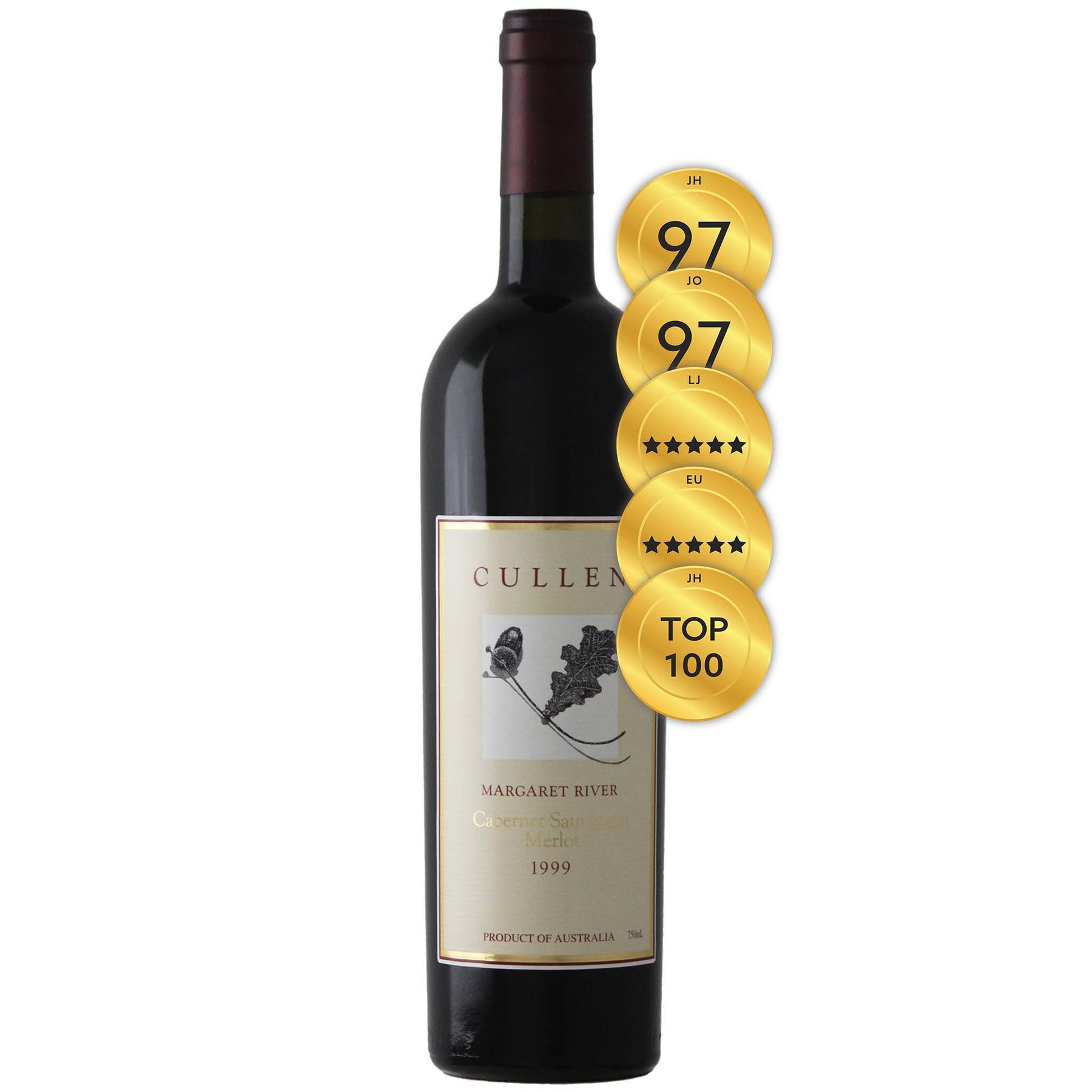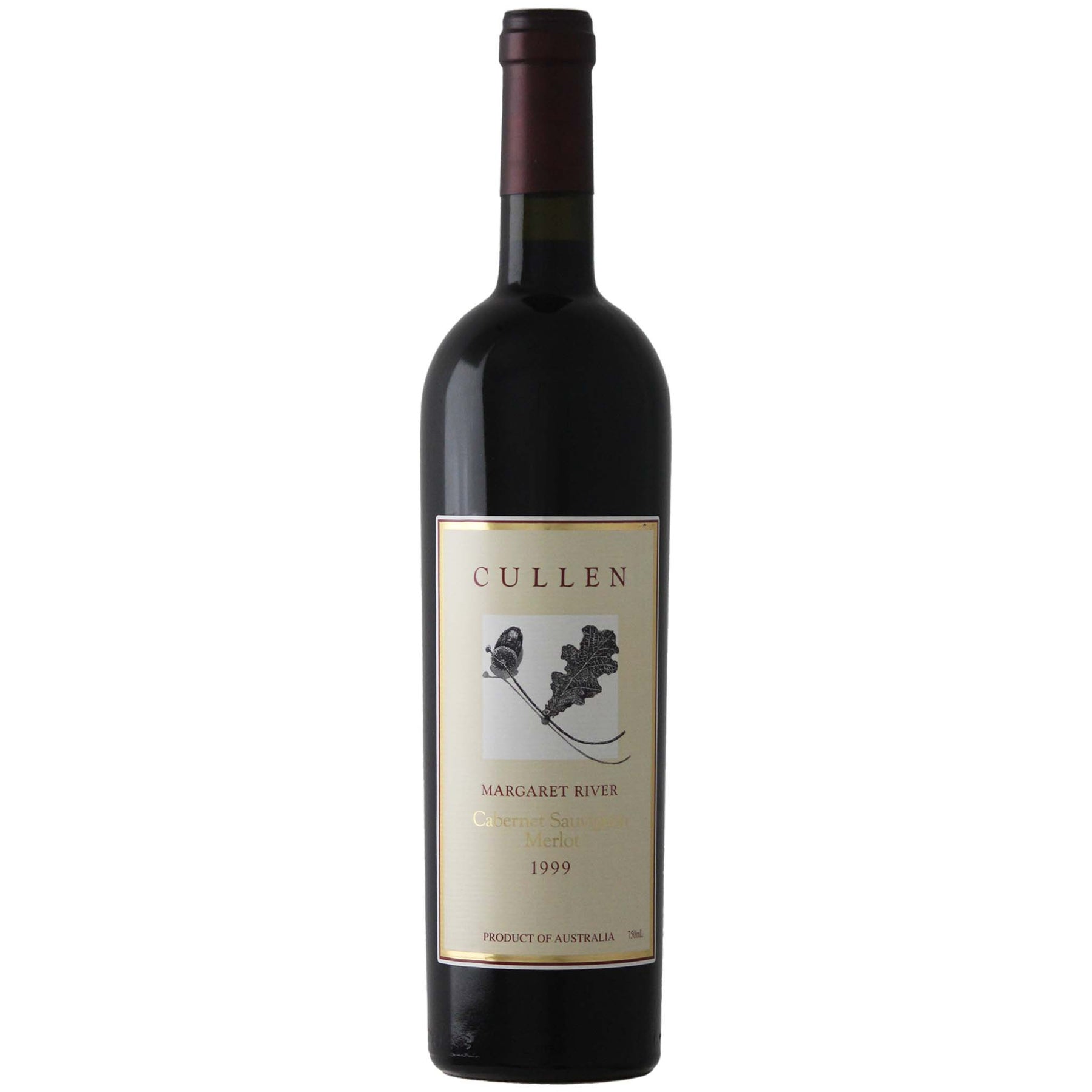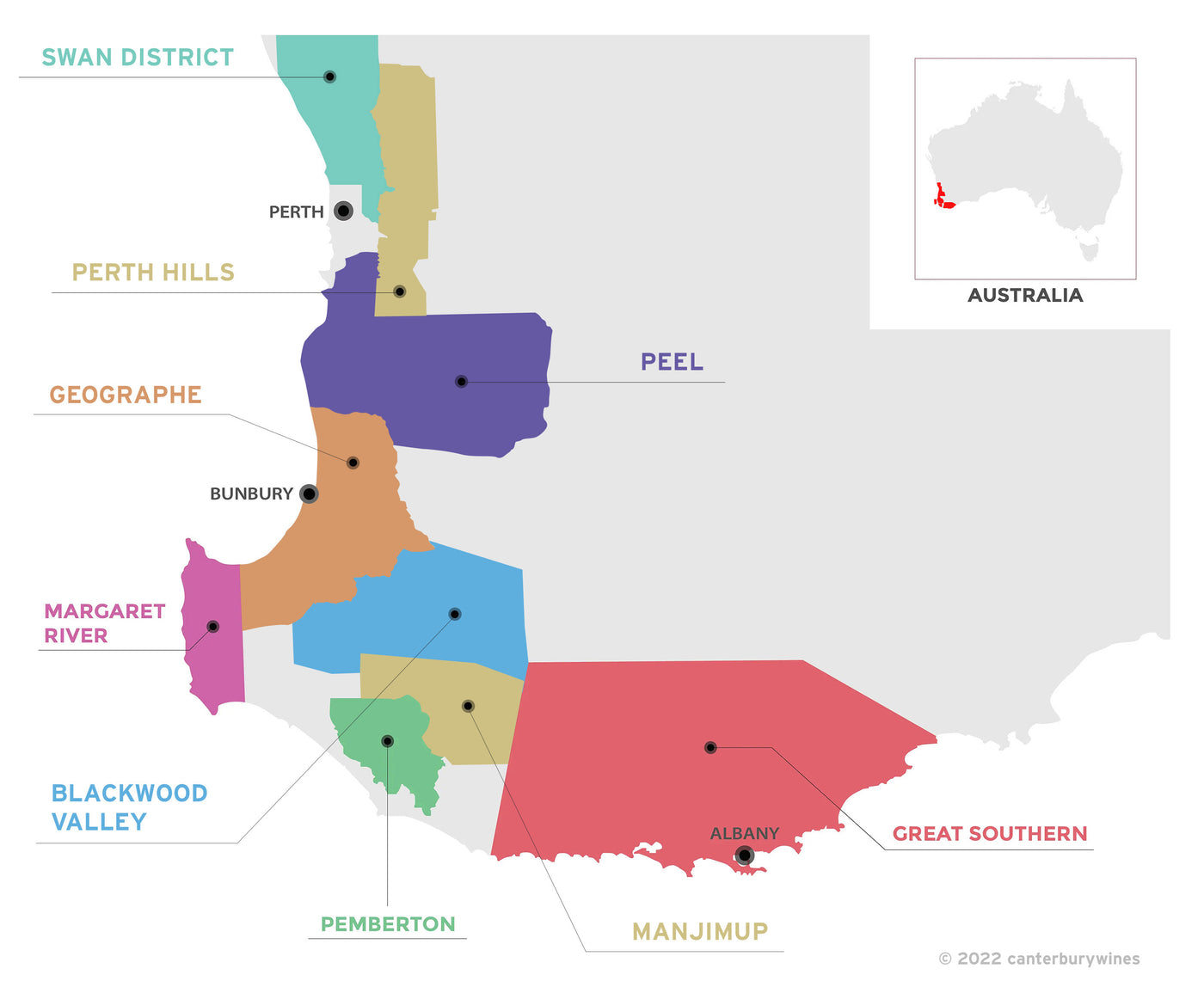

Cullen (Diana Madeline) Cabernet Sauvignon Merlot 1999
Style: Red Wine
Closure: Cork
Cullen (Diana Madeline) Cabernet Sauvignon Merlot 1999
Warehouse
34 Redland Drive
Vermont VIC 3133
Australia
Critic Score: 97 and ★★★★★
Alcohol: 14.0%
Size: 750 ml
Drink by: 2030
James Halliday Top 100 Wines of 2001
Cullen is an iconic Margaret River winery and the Diana Madeline is their flagship red wine. It is famed for its quality and consistency, is sought after by collectors world-wide and is a worthy regional benchmark. It is a classic Cabernet Sauvignon dominant Bordeaux blend grown on an exemplary vineyard. By1999 Cullen had changed to total organic viticultural practices and was well down the path to Organic Certification.
Please note that prior to the 2001 vintage, Cullen Diana Madeline was labelled Cullen Cabernet Sauvignon Merlot.
"Di and Vanya Cullen consider 1999 to be one of the greatest vintages, and it shows in this imperious wine. Strong purple-red, the powerful but pristine bouquet proclaims the blackberry-blackcurrant-cassis fruit of the palate framed by the inimitable Cullen tannins which run through from the mid-palate to the finish." James Halliday
"Vanya Cullen has taken her Cabernet Merlot into the top echelon of Australian Cabernet through dogged determination, curiosity and superb technical skills. The exemplary vineyard site is planted on ancient granitic soils in the central Willyabrup sub-region of Margaret River. Cullen has adopted the principles of biodynamic viticulture to 'achieve greater individuality of site through working with nature rather than against it'. This estate style is about freshness and complexity, structure and suppleness. The wines have pronounced cassis and cedar aromas with fine beautifully ripe tannins. Earthy, anise, gamy aromas and flavours develop with age. Diane Madeline Cabernet Merlot is named in memory of Di Cullen who established the winery and vineyard with her husband in 1971." Andrew Caillard MW
Expert reviews
"This is an absolutely brilliant wine. It possesses the elusive qualities of violets, so often likened to Chateau Margaux. The palate is opulent, but has a superbly fine structure and shows perfectly handled oak. Oct 2001." Lester Jesberg, Winewise ★★★★★
"1999 Cullen Cabernet Sauvignon Merlot. Cellaring: 25 years to go." James Halliday, Wine Companion Magazine Feb/Mar 2014 - 97 points
"Meaty, slightly smoky ethereal fragrance deeply laden with brooding dark fruits. Sumptuous, opulent palate of remarkable depth and drive, saturated with concentrated, juicy berry cabernet, black cherry/tobacco merlot influences and cedar/mocha oak. Framed by firm, tightly knit tannins, it finishes long and persistent, with lingering dusty, minty nuances. Drink 2019-2029." Jeremy Oliver - 97 points
"Di and Vanya Cullen consider 1999 to be one of the greatest vintages, and it shows in this imperious wine. Strong purple-red, the powerful but pristine bouquet proclaims the blackberry-blackcurrant-cassis fruit of the palate framed by the inimitable Cullen tannins which run through from the mid-palate to the finish." James Halliday, The Weekend Australian - 96 points and Top 100 Wines of 2001
"Vanya Cullen's classic Bordeaux blend from the 1999 vintage has a huge colour, dense, opaque and impressive pure berry fruit with great concentration of cassis and a touch of mint, really good ripe fruit on the palate, superbly controlled style despite the power." Decanter Magazine, September 2001
"This brilliant but shy wine needs time. Solid colour is the first clue, then concentrated blackberry fruit and roasty oak aromas and flavours swell to the fore, leaving a mouth puckering tannin finish. A Medoc-style classic in the making." The Age Uncorked, Winter 2001 ★★★★★
Awards
James Halliday Top 100 Wines of 2001
Organic/biodynamic

The combination of firstly organic, and subsequently biodynamic viticulture at Cullen Wines provides the opportunity for the land to exist at its full potential, thereby nurturing vines to produce their best and most individual grapes. Vanya Cullen has pushed the limits of biodynamic practices in every facet of the business and the yield of the estate vineyards has soared. All Cullen Wines are grown on a certified Biodynamic, Carbon Neutral and naturally powered estate.
Organic Viticulture
Since 1971 when the Cullen Vineyard was planted, chemical intervention was minimal and the family's concern for the environment paramount. In 1998 the change to total organic viticulture was made. Organics is about soil health and Diana and Vanya went intuitively towards healing the soil by putting back what had been taken out. Organic farming promotes biological activity, which converts plant and animal residue into stable humus. This in turn increases the soil's ability to retain moisture and provide a reserve of nutrients. The Cullen vineyards were certified A Grade Organic in 2003.
Biodynamic Viticulture
In 2003, whilst attending a Biodynamic Conference, Vanya Cullen decided that Biodynamics would add further to the holistic and natural approach to both vineyard and winemaking. Biodynamics builds on organic farming to make all organic processes work more efficiently and effectively.
Biodynamic viticulture is a philosophy combining the maintenance of sustainable soil fertility and the recognition of the link between plant growth and the rhythms of the cosmos. Moon rhythms strongly influence life on earth life. As tides rise and fall in a pulsing rhythm, so does the sap of plants and all other liquids including those within the earth's mantle. Viticultural practices are conducted according to these moon rhythms. The position of the moon in relation to the planets is critical in determining the optimal time to plant.
In addition, the difference between organic and biodynamic is the use of biodynamic preparations 500 and 501, with 502-508 also being used. Preparation 500 is cow horns filled with cow manure which helps the soil develop humus and attracts earthworms and micro organisms. Preparation 501 is cow horns filled with quartz crystals which aids photosynthesis and the uptake of minerals in the soil.
In 2004 the Cullen vineyards were certified A Grade Biodynamic.
About the winery

In 1948, Dr Kevin John Cullen and his wife Diana Madeline Cullen purchased their property in Wilyabrup, which is in the heart of Margaret River. In early 1965 they started considering other uses for their sheep and cattle farm. They decided to plant lupins, so invited Dr John Gladstones (who had studied lupins in his post-graduate research) to visit their property. Dr Gladstones had also put considerable work and research into the suitability of growing vines in southwestern Australia and, according to Diana, upon seeing their land said "Oh, you're mad growing cattle and sheep, why don't you grow grapes?"
Dr Gladstones described Wilyabrup as being the sweet spot of the Margaret River region, most favourable for growing Cabernet Sauvignon. In 1966 he published his now-famous report which compared the climate and soils of Margaret River to that of Bordeaux. Many regard him as the founder of the Margaret River wine region.
In 1971 Kevin and Diana Cullen made the decision to plant 18 acres of vines on the land, including their first Cabernet Sauvignon vines. Further plantings were made over the subsequent decades. The mature 28-hectare dry grown vineyard still operates today and the grapes for all the Cullen wines are sourced from here and the adjacent Mangan Vineyard which was planted in 1995.
While Kevin Cullen worked as a doctor to support the business, Diana Cullen supervised and managed the winery and became Chief Winemaker in 1981. Diana made history in 1982 by being the first woman to win a trophy at the Perth Royal Show. Kevin passed away in 1994 and Diana in 2003, and the Cullen flagship wines are now named in their honour; the Kevin John Chardonnay and Diana Madeline Cabernet Sauvignon Merlot. Both Kevin and Diana have been awarded life membership with the Margaret River Wine Industry Association, and in 2003 the WA Wine Industry Association introduced the annual Diana Madeline Cullen Award for Outstanding Contribution by an Individual to the WA Wine Industry in her honour.
In 1983 Diana was joined by daughter Vanya Cullen, who took over the reign as Chief Winemaker in 1989 and was also appointed Managing Director in 1999. With Vanya at the helm, the quality of the wine is paramount and every step taken in the vineyard and in the winemaking is geared to that aim. The quality of Cullen Wines comes in the main from the vineyard - the wines can only be as good as the grapes. To realise the full potential of the vineyard, Vanya has embraced organic and biodynamic viticultural practices and the vineyards were certified A Grade Organic in 2003 and A Grade Biodynamic in 2004.
The process of making the wine involves handling the fruit as little and as gently as possible. Practices such as hand harvesting, minimal fruit transport, sorting of the fruit before crushing, minimal wine movement, minimal fining for the whites, no fining for the reds and minimal filtration are employed. The wines mostly make themselves, with little or no intervention; which means the use of indigenous yeast, no additions of any kind and minimal oak use and fining.
Vanya Cullen received the "Australian Winemaker of the Year" award from Gourmet Traveller Wine magazine in 2000 and was voted "Woman of the Year" by UK based wine magazine The Drinks Business in 2008, becoming the first Australian to receive the award. Vanya was also awarded Halliday Wine Companion's winemaker of the year in 2020.
Cullen became the first vineyard and winery in Australia to be certified carbon positive, starting the process in 2006. Vanya Cullen is also on the board of the "Days of Change" program, which aims to help Western Australian people and businesses live and operate in a more sustainable way.
2021 marked a half-century for the brand and with it a celebration of the Cullen Wines legacy. "This year we celebrate 50 years of Cullen Wines – 50 years of sustainable wine growing preceded by 65,000 years of Wadandi sustainable land care," says Vanya. "Over that time we've been supported by generous people with a wonderful spirit of camaraderie and warmth of spirit, and we are so grateful."


Western Australia
Western Australia is home to more than 400 wineries across nine vast and extraordinary wine regions which are almost entirely concentrated in the south-west and great southern land divisions of the State. The regions are Blackwood Valley, Geographe, Great Southern, Peel, Pemberton, Manjimup, Margaret River and Swan District.
The oldest region is the Swan Valley, the best known both nationally and internationally is Margaret River and the largest is Great Southern. The Great Southern region is further divided into the five subregions of Albany, Denmark, Frankland River, Mount Barker and Porongurup.
The history of wine production in Western Australia dates back to 1840 with the establishment of Sandalford in the Swan Valley region. The recognition of the fine wine possibilities started to be realised after the establishment of the Margaret River Region in 1967, which has become renowned for its high quality Chardonnay and Cabernet Sauvignon. The other regions produce a diverse range of regionally distinct wines, from stunning Rieslings and evocative Shiraz, to a range of unique Cabernet Sauvignon blends.



